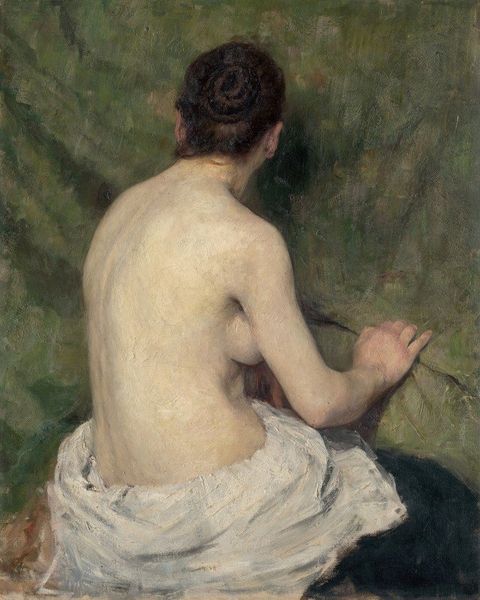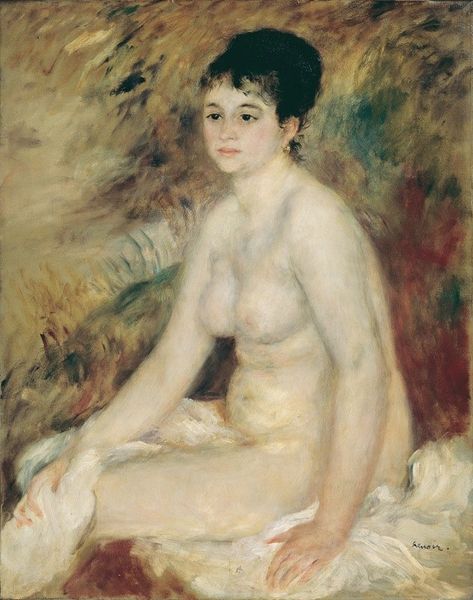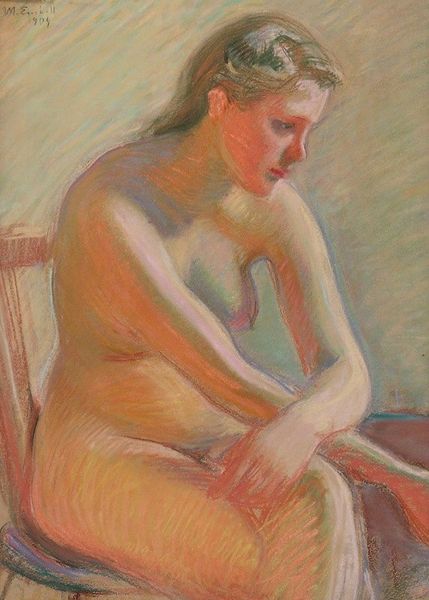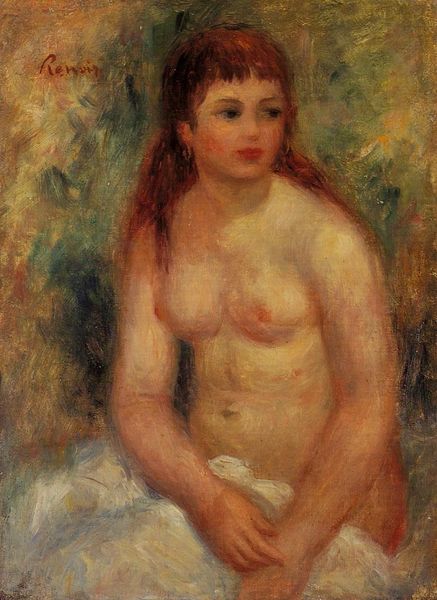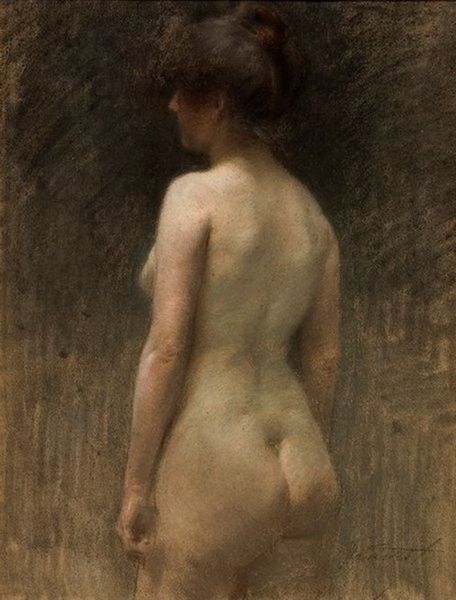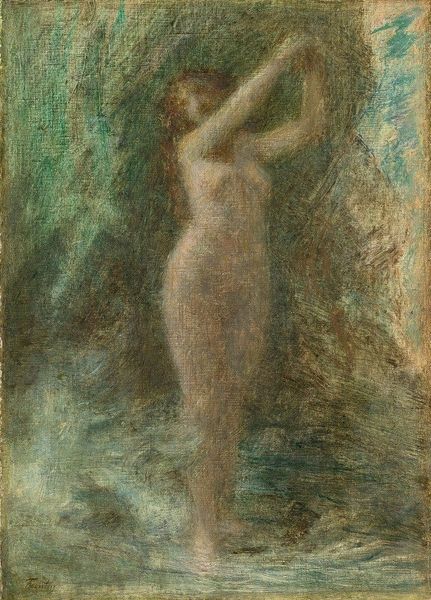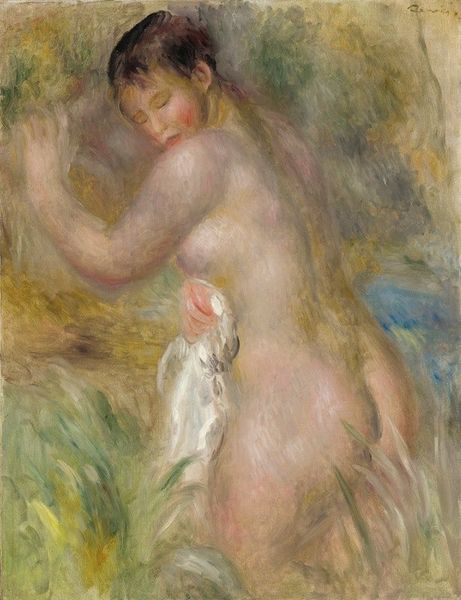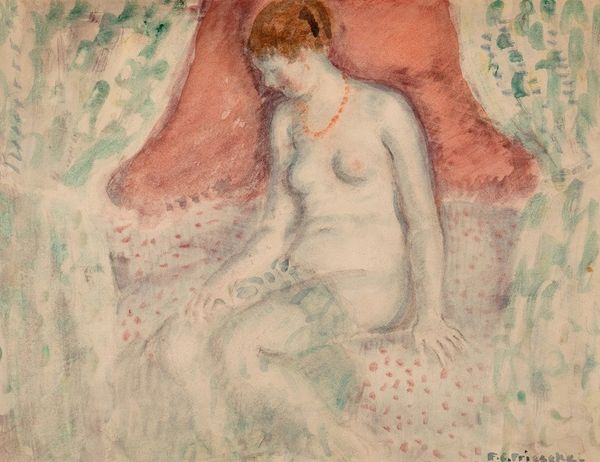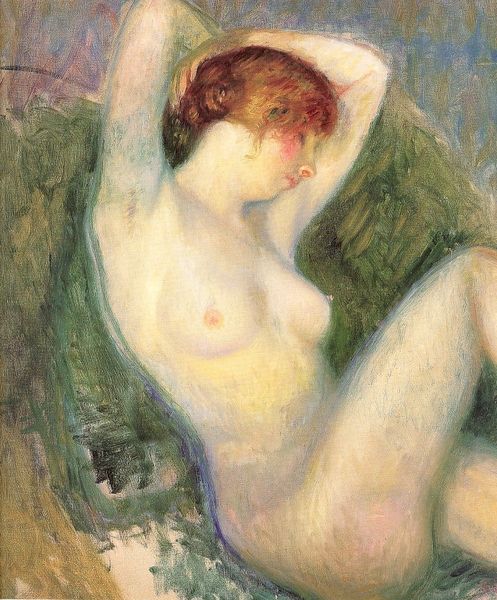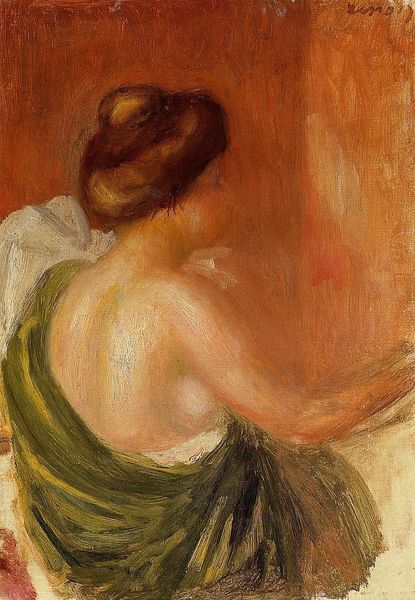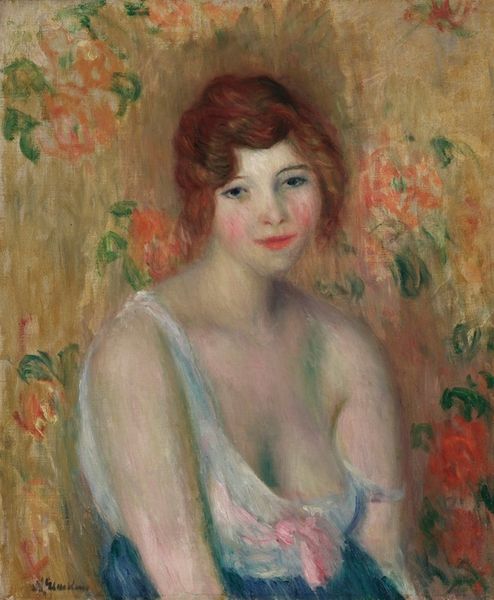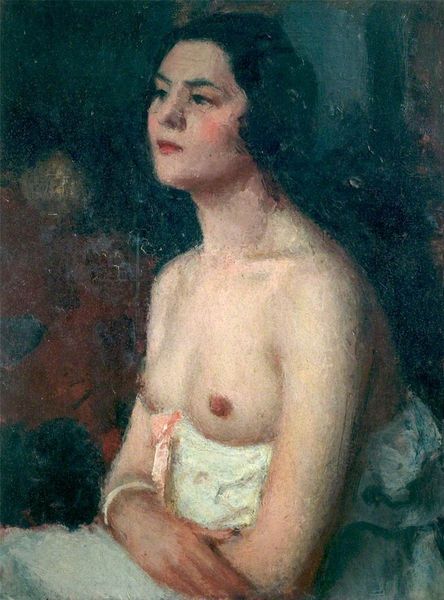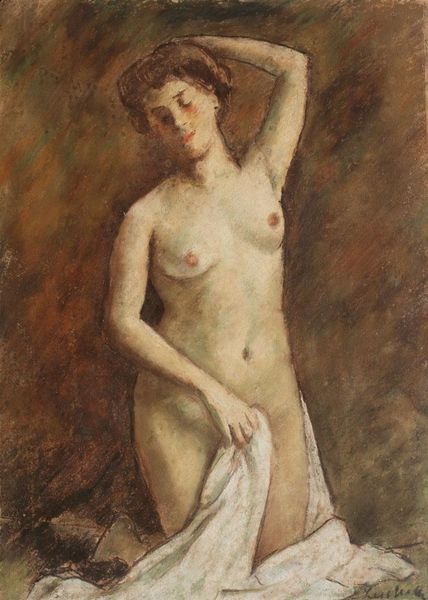
Copyright: Public Domain: Artvee
Curator: Looking at "Nu Assis, De Dos," painted by Pierre-Auguste Renoir around 1895, the overwhelming impression is one of soft, diffused light. It's as though we've stumbled upon a fleeting, intimate moment. Editor: It strikes me immediately as more an object than a subject. Consider the raw materiality: Oil paint on canvas rendering flesh tones with visible brushstrokes—emphasizing texture over the specific. The background nearly melts into the figure itself. Curator: And that merging is key. The indistinct floral backdrop evokes a timeless Edenic garden. The female nude, presented from behind, loses some individuality and transforms into an archetype of feminine beauty—a return to Romantic ideals filtered through an Impressionistic lens. Editor: Archetype, perhaps, but also commodity. Remember the social context: these images were destined for a particular kind of consumption, reflecting bourgeoise fantasies and reinforcing gendered power dynamics. How much labor went into the making versus how it was received and commodified? Curator: Undoubtedly, Renoir worked within those constraints. However, the pose also resonates with classical Venus figures. The act of turning away invites contemplation on voyeurism and modesty. The very turning away transforms the simple depiction into something symbolic, drawing on centuries of artistic and societal understandings of the female form. Editor: Symbolism definitely complicates it. The seemingly spontaneous brushwork belies calculated marketing. Consider the pigment choices – readily available, reflecting standardized artistic production of that period. Even the landscape setting becomes a manufactured idyll meant to sell a certain lifestyle, an escape. Curator: Still, I appreciate how Renoir plays with light and shadow to create a sense of depth, especially within the back, almost elevating the human form into something divine. There's an undeniable reverence within that very specific type of figuration. Editor: Re-contextualizing through a materialist perspective gives it, I think, a grounded but more complex interpretation of even such 'classic' themes of artistic creation. Curator: Indeed. Appreciating both the ethereal beauty and its context gives one greater insight. Editor: Yes, recognizing materiality with these pieces changes everything!
Comments
No comments
Be the first to comment and join the conversation on the ultimate creative platform.
